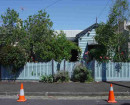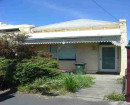Bendigo Sandakan Memorial
McIvor Highway BENDIGO, GREATER BENDIGO CITY
-
Add to tour
You must log in to do that.
-
Share
-
Shortlist place
You must log in to do that.
- Download report























Statement of Significance
This record has minimal details. Please look to the right-hand-side bar for any further details about this record.
-
-
Veterans Description for Public
Bendigo Sandakan Memorial - Veterans Description for Public
The Bendigo Sandakan Memorial was unveiled in 1995 and is dedicated to the men of Victoria, South Australia and Tasmania who perished at Sandakan and Ranau in North Borneo during the Second World War. It is one of several memorials established by the Sandakan memorial Foundation between 1993 and 1995. Others were erected in NSW, at Burwood, Tamworth, Wagga Wagga, Maitland, in Brisbane and at Boyup Brook in Western Australia.
The Sandakan memorials take the form of a topographical scale model, cast in bronze, of a section of the Crocker Range in Sabah. A brass ribbon demonstrates the 265-kilometre route of the death marches from Sandakan to Ranau in the foothills of Mt Kinabalu. The sculpture rests on a shelf of Riverina granite quarried at Tocumwal, the whole being supported by brickwork which in turn supports the bronze honour roll plaques.
The mould for the sculpture was made by Don Wall, an ex-prisoner of war whose book inspired the project, and Tom Connolly whose father was among the last of the priosoners massacred at Ranau.
Sandakan is located at the north-east corner of Borneo in present day Sabah, Malaysia. During the Second World War, it was to be the site of a Japanese airfield, constructed by Australian and British prisoners of war, captured after the fall of Singapore in February 1942.
In July 1942, the first of 2434 prisoners of war (1787 Australians and 641 British) were transported from Singapore to Sandakan. For the first two years, conditions were comparable to working for the Japanese elsewhere in the reigon: much brutality, illness and starvation.
In mid 1944, however, rations at Sandakan were further cut and particularly vicious guards arrived from Formosa (Taiwan). Conditions deteriorated rapidly. Torture became normal, with starving and ill men crammed into an open-air cage without food or water for days at a time. At Sandakan, work on the Japanese airfield had stopped by January 1945, mainly as a result of Allied Air raids. In January, the rice ration ceased, and prisoners were only allowed 70 grams per day from whatever had been accumulated.
The first of the death marches began on 28 January when 455 prisoners in wretched condition were forced to walk from Sandakan to Ranau, 260 kilometres away up a barely scratched track. By mid February, 114 had died along the way, and the last of the survivors arrived at Ranau.
While a rescue plan involving trained Australian paratroops had been devised, it relied on intelligence supplied by Australian Z Special Forces secretly operating in Borneo. It seems that faulty intelligence was supplied in April 1945 that all prisoners had been moved from Sandakan, and the plan to rescue them, codenamed Operation Kingfisher, was never undertaken. But even after the first march, hundreds of prisoners were still alive at Sandakan. This was a failure of intelligence and will that had horrendous consequences; after the war everyone from General Macarthur and General Blamey down was blamed.
Allied air raids on Sandakan in late May 1945 seem to have prompted the Japanese to move any remaining prisoners who could still walk out of reach of rescue. On 29 May, they sent 536 prisoners on the second forced march to Ranau and burned the camp buildings. The 288 prisoners of war who were too sick to walk were left behind in the ruins. On 15 June, a further seventy-five were sent up the track; all perished. At the end of June, the 183 survivors of the secondmarch arrived at Ranau to find just six men alive from those who had walked in January.
At the end of July, there were just forty men, barely alive, at Ranau and ten at Sandakan. The last man at Sandakan was murdered on 15 August. His name isn't known, but he was an Australian. This was the day that Emperor Hirohito conceded that the war was not 'necessarily going in Japan's favour', and offered unconditional surrender. The Australian was beheaded and kicked into a ditch. At Ranau, the fifteen men still alive were not executed until 27 August.
Just six men, all Australian, had escaped the death marches and bore witness - Keith Botterill, Richard Braithewaite, Owen Campbell, Bill Moxham, Nelson Short and Bill Sticpewich. Fifteen of the Japanese officers were tried after the war; four were found guilty of murder and were hanged at Rabaul.
One such Sandakanprisoner was Gunner Albert Cleary, 2/15th Australian Field Regiment, from East Geelong, was born on 16 June 1919. He survived the first march to Ranau. In March, Cleary, along with Gunner Wally Crease, escaped from Ranau.
After four days on the run, Cleary was recaptured. He had clearly been beaten-up before his return to the camp. His arms were tied high up behind his back, and he was then tortured for several days and nights. Crease managed to escape again but was recaptured and shot. Keith Botterill, who had been sent away from Ranau for four days on a work detail, returned to find Cleary barely alive, tied by the neck to a tree, dressed only in a small loincloth. Cleary was filthy, covered in caked blood and suffering from dysentery. He was left to lie in his own excreta for the next eleven or twelve days.
When the guards could see that Cleary was dying, he was thrown into the gutter beside the road. Eventually, he was allowed to be taken away by his comrades. They carried him to a stream, washed him, and brought him back to be among them in oneof the huts. On 20 March 1945, Gunner Albert Cleary, aged 22, died. A memorial to Gunner Cleary was erected at Ranau in 1985.
-
-
-
-
-
53/202 St Aidans Road
 Greater Bendigo City H2056
Greater Bendigo City H2056 -
42/202 St Aidans Road
 Greater Bendigo City H2056
Greater Bendigo City H2056 -
41/202 St Aidans Road
 Greater Bendigo City H2056
Greater Bendigo City H2056
-
-






